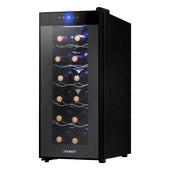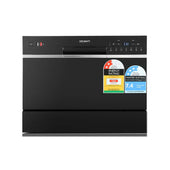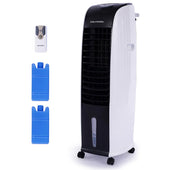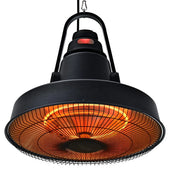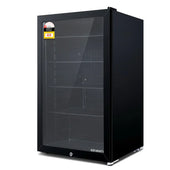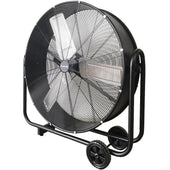Introduction to Laptop Processors in 2025: Evolving Technology Defined
Laptop processors in 2025 reflect significant advancements in computing power, energy efficiency, and design. These processors are tailored to meet growing demands for multitasking, artificial intelligence, and high-resolution applications. Modern-day chips are increasingly integrated with AI accelerators to enhance performance during tasks such as image recognition and natural language processing.
Key trends include the adoption of smaller nanometre manufacturing processes, enabling greater computational density. Innovations in ARM-based architectures and hybrid designs continue redefining performance standards. Furthermore, an emphasis on sustainability has driven the production of processors that consume less energy while maintaining adequate power for intensive computing scenarios. You can explore more tech evolution insights on During Days.
The Architectures Shaping 2025: x86, ARM, and RISC-V Explained
Modern laptop processors rely on three leading architectures: x86, ARM, and RISC-V, each tailored for specific performance and efficiency needs.
- x86 Architecture: Dominated by Intel and AMD, x86 remains a powerhouse for high-performance tasks, widely used in gaming, productivity, and server-grade laptops. Its complex instruction set enables robust backward compatibility and raw computational power.
- ARM Architecture: Favoured for its energy efficiency, ARM powers many ultrabooks and hybrid devices. Utilising a reduced instruction set, ARM processors offer extended battery life without sacrificing performance for day-to-day tasks.
- RISC-V Architecture: Emerging as an open-source alternative, RISC-V attracts innovation with its customisable, cost-effective design. It suits edge computing, AI, and niche applications, gaining traction among research and smaller-scale manufacturers.
These architectures define versatility in laptops, catering to diverse user demands.
Top Manufacturers Driving the Market: Intel, AMD, Apple, and Others
In 2025, the laptop processor market continues to be shaped by key manufacturers who push boundaries in performance, efficiency, and innovation.
- Intel: Renowned for its Core series, Intel focuses on hybrid architectures combining performance and efficiency cores, catering to a broad spectrum of users.
- AMD: Leading with its Ryzen processors, AMD capitalises on multi-threading technology, excelling in both gaming and professional tasks.
- Apple: With its ARM-based M-series chips, Apple utilises custom silicon for seamless integration, delivering unparalleled efficiency in macOS devices.
- Other Players: Companies like Qualcomm and MediaTek expand options, targeting ultrathin laptops and budget markets.
These manufacturers compete fiercely, driving advancements in AI acceleration, battery optimisation, and thermal performance, shaping the future of mobile computing.
Performance Metrics Decoded: What GHz, Cores, and Threads Truly Mean
Understanding laptop processors means untangling key metrics: GHz, cores, and threads. Gigahertz (GHz) measures a processor's clock speed, indicating how many cycles it executes per second. Higher clock speeds generally lead to faster computations, though efficiency can vary by architecture.
Cores represent physical processing units within a CPU. Multi-core processors enable simultaneous execution of tasks, vital for multitasking and demanding applications. Threads, meanwhile, are software-defined processes managed by cores. Modern processors often deploy hyper-threading, allowing each core to handle multiple threads effectively.
Together, cores and threads determine throughput capability, while GHz influences execution speed. Balance among these metrics is essential for optimal performance tailored to specific user needs.
Power Efficiency vs Performance: Striking the Perfect Balance
Modern laptop processors in 2025 are designed to balance power efficiency and performance, catering to diverse user needs. Manufacturers employ advanced fabrication technologies, such as 3nm and below, to pack more transistors into smaller spaces. These advancements reduce energy consumption while enhancing processing power.
Features like dynamic voltage scaling and efficient core designs enable processors to adjust power usage based on workload. Users often face a trade-off: high-performance processors typically consume more power, shortening battery life, whereas efficient processors ensure longer use but may lag under heavy tasks.
To address this, hybrid architectures, combining high-performance and efficiency cores, provide an optimal solution for most scenarios.
AI and ML Integration in Modern Processors: A Game-Changer?
The integration of Artificial Intelligence (AI) and Machine Learning (ML) capabilities into modern laptop processors has significantly redefined performance and functionality. These processors now include specialised AI accelerators or Neural Processing Units (NPUs) aimed at enhancing tasks like real-time data processing, predictive analysis, and energy efficiency.
Key benefits include:
- Optimised Performance: AI-enhanced processors dynamically adapt tasks, ensuring faster computation and multitasking.
- Enhanced Security: AI assists in anomaly detection, providing robust system security.
- Power Efficiency: ML algorithms manage energy usage, extending battery life.
This fusion also supports edge computing, enabling faster responses without relying heavily on cloud connectivity. With advances in AI architecture, processors are becoming indispensable for professionals, gamers, and content creators.
The Rise of Custom Silicon: How It’s Changing Laptop Design
Custom silicon has emerged as a transformative force in laptop design, enabling manufacturers to optimise hardware and software integration like never before. By developing processors tailored to specific use cases, companies achieve better energy efficiency, enhanced performance, and smaller device footprints. Apple’s M-series chips exemplify this trend, offering unified memory architecture for faster data processing.
Other major players, such as AMD and Qualcomm, have followed suit, creating processor designs to meet diverse market needs. These innovations allow for lighter laptops, longer battery life, and improved thermal management. Custom silicon fosters seamless multitasking and fuels innovation in AI-based applications, reshaping modern computing standards.
Understanding Hybrid Processors: Big.LITTLE and Similar Architectures
Hybrid processors, such as those utilising ARM's big.LITTLE architecture, combine high-performance cores with energy-efficient cores to optimise power and performance. This design allows devices to balance demanding tasks with low-power operations seamlessly. High-performance cores handle intensive jobs like gaming or video editing, while efficiency cores manage background tasks such as email syncing or system updates.
In laptops, hybrid processors are increasingly common, offering longer battery life without compromising processing power. Both Intel's Alder Lake and Apple's M-series chips adopt hybrid designs. Manufacturers also fine-tune core usage with advanced algorithms, ensuring optimal workload distribution. These innovations cater to the evolving demands of portability and performance in modern laptops.
Graphics Processing in 2025: Integrated vs Dedicated GPUs
The debate between integrated and dedicated GPUs in laptops remains significant in 2025, heavily influenced by use cases and technological advancements. Integrated GPUs, embedded within processors, deliver energy efficiency and sufficient performance for everyday tasks such as video streaming, office productivity, and casual gaming. They are particularly appealing in ultrabooks and budget laptops where power consumption and cost are priorities.
Dedicated GPUs, on the other hand, excel at handling graphically intensive workloads like AAA gaming, 3D rendering, and machine learning. Though they offer superior graphical power, they consume more energy, generate additional heat, and increase overall system cost.
Users must weigh flexibility versus performance when choosing between these two options, considering needs like portability, workload intensity, and budget constraints.
Future-Proofing Your Laptop: Choosing the Right Processor
Selecting a processor in 2025 requires balancing current performance needs with potential future demands. Modern processors offer advanced architectures, like hybrid designs combining efficiency and performance cores, which enhance multitasking and power management. A key factor is understanding the intended use—e.g., gaming, video editing, or general productivity—since each task demands varying CPU power levels.
Key considerations include:
- Core Count and Threads: Higher cores suit intensive tasks like 3D rendering, while fewer cores suffice for light workloads.
- Clock Speed: A higher GHz rating ensures faster processing for single-threaded applications.
- Compatibility: Ensure the processor works with the laptop's thermal design and supports future software updates.
- AI and Accelerators: Newer CPUs often include AI capabilities for tasks like machine learning and voice recognition.
Choosing wisely ensures longevity and optimal performance.
Security Features in 2025 Processors: Protecting Your Data
Modern processors in 2025 integrate advanced security features designed to safeguard sensitive data from increasingly sophisticated threats. These processors employ hardware-based security technologies that provide more robust defence than software solutions alone. Key features include:
- Built-in Encryption Engines: These enable real-time encryption and decryption of data to protect against unauthorised access.
- Secure Boot Mechanisms: Ensure that the system boots only trusted software by verifying digital signatures.
- Dedicated Security Co-Processors: These handle sensitive operations like biometric authentication and encryption, isolating them from the main CPU.
- Runtime Memory Protections: Features such as Memory Protection Keys (MPK) prevent unauthorised applications from accessing protected regions.
Such advancements make data breaches more difficult while enhancing privacy for both personal and business users.
Thermal Solutions and Their Impact on Processor Performance
Effective thermal management is critical for optimising processor performance in laptops. Processors generate significant heat under heavy workloads, and inadequate cooling can lead to thermal throttling—a process where the CPU slows down to prevent overheating. Manufacturers employ various cooling solutions, such as advanced vapour chambers, heat pipes, and fan designs, to ensure efficient heat dissipation.
Passive cooling mechanisms rely on heat sinks and chassis design, while active cooling involves dynamic fan systems. Innovations in phase-change materials have also enhanced heat management. User behaviours, such as prolonged usage or high-performance applications, can exacerbate thermal challenges. Maintaining ideal temperatures directly impacts processor efficiency, reliability, and lifespan.
The Role of Software: Compatibility and Optimisation with Hardware
Software plays a crucial role in determining how efficiently a processor operates within a laptop. Optimisation ensures hardware potential is maximised by synchronising tasks, reducing bottlenecks, and enabling faster processing. Software compatibility directly influences system stability; incompatibility can lead to errors, crashes, or suboptimal performance. Modern operating systems and applications are increasingly tailored to utilise multi-core processors, leveraging parallel processing for complex tasks.
Driver updates and firmware also bridge gaps between hardware and software, enabling advanced features. Sophisticated software algorithms allow processors to adapt to workloads dynamically, ensuring power-saving adjustments without sacrificing performance. Enhanced software optimisation supports future-proofing laptops against emerging applications.
Comparing Price-to-Performance Ratios Before Making a Decision
Understanding the price-to-performance ratio is essential when evaluating laptop processors. This metric allows users to compare processor efficiency relative to its cost. High-performance processors, such as Intel Core i9 or AMD Ryzen 9, often carry premium prices suited for demanding tasks like video editing or gaming. Mid-tier options, including Intel Core i5 or AMD Ryzen 5, generally provide balanced performance at a reasonable cost for everyday use.
Key factors influencing this ratio include clock speed, core count, and integrated GPU capabilities. Buyers should weigh their specific needs against the cost, ensuring they invest wisely in a processor that meets both performance demands and budget constraints. Transitioning between price ranges offers flexibility, catering to diverse user requirements.
Final Thoughts: Key Considerations for Choosing a Laptop Processor in 2025
When evaluating laptop processors in 2025, several factors need careful attention. Performance remains paramount, with core counts and clock speeds directly impacting multitasking capabilities and overall computing power. Energy efficiency is equally critical, especially as battery life continues to influence portability decisions. Compatibility with emerging technologies like AI acceleration, machine learning, and advanced graphics processing should also be taken into account.
Additionally, users should weigh processor architecture against intended usage scenarios, such as gaming, video editing, or everyday office tasks. Budget considerations play a pivotal role, with affordable options offering solid performance for regular activities. Finally, prioritising future-proofing ensures relevance amidst evolving software demands.
















